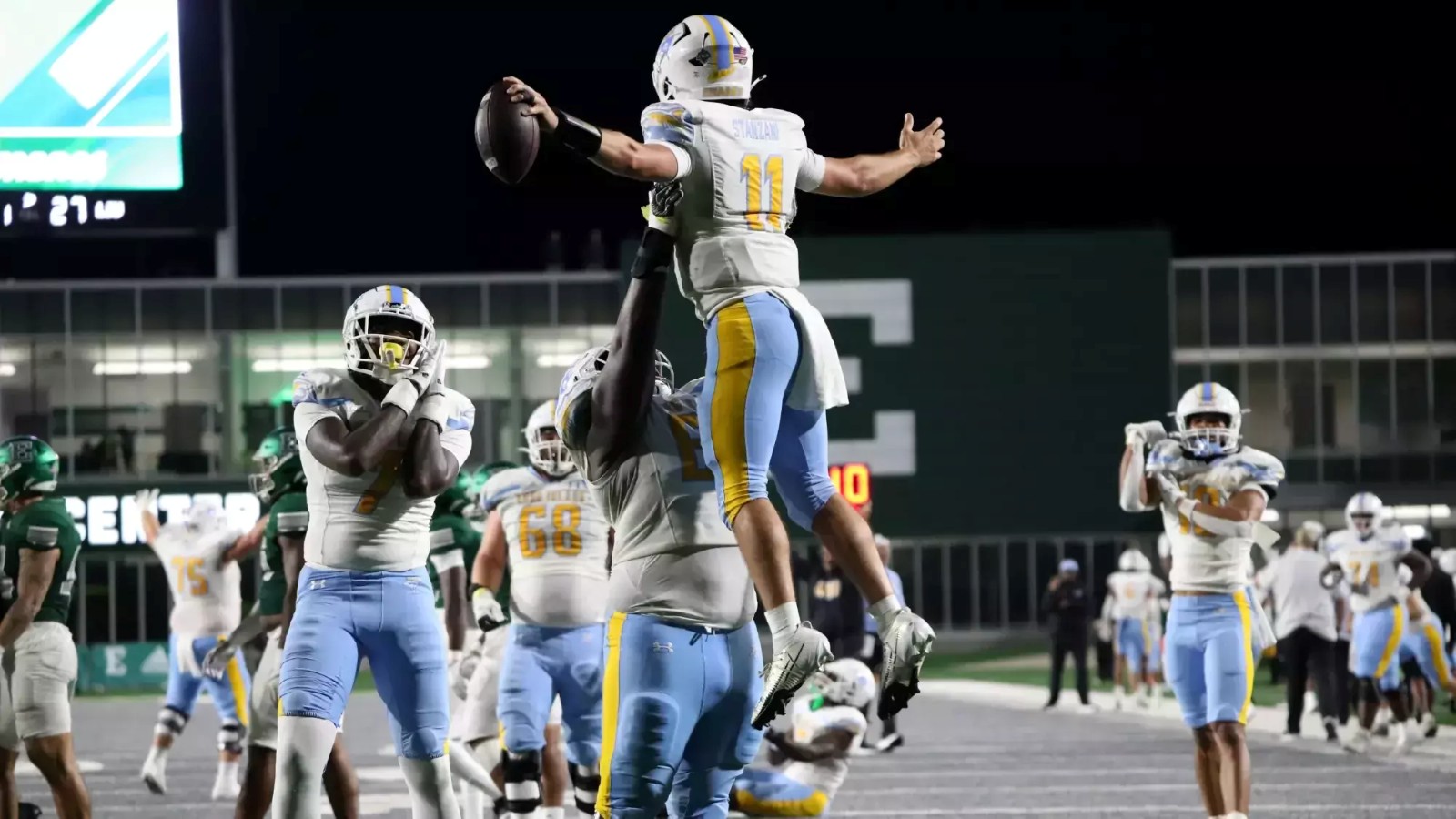Welcome back to Fear The FCS, where a descent into FCS Playoff history has reached its lowest depth. Part one looked at the entirety of the FCS playoffs while the second part of a five-part series focused on the 1978 through 1992 era. Part three focused on the 1993 through 2009 season and the penultimate section will focus on the expanded playoffs also known as the Frisco era. The entire series breakdown is shown below. It is highly recommended that parts one, two, and three be reviewed to explain some of the methodology, measures, and context leading up to the Frisco era that began in 2010. A brief history of the subdivision’s changes from 2010 through 2023 will start this era’s analysis.
Part 5 – Conclusion and Addendum
NCAA Expands the FCS Playoffs… Twice
Starting in 2010, the NCAA decided to expand the FCS Playoffs from 16 to 20 teams as the subdivision was noticeably larger at 125 teams compared to the previous expansion in 1986. When the NCAA expanded the playoffs to 16 teams in 1986, there were 87 teams in the subdivision while the 16-team format remained in place for over two decades even as the FCS eclipsed 120 teams. The 20-team playoff was used for all three seasons and was expanded again to 24 teams beginning with the 2013 season.
At the same time as the 2010 expansion, the NCAA moved the national championship game from Chattanooga, Tennessee to Frisco, Texas. 13 title games were played in Chattanooga and 14 have been played in Frisco through the 2023 season. Despite the expanded playoffs, the FCS membership has remained relatively steady from a low of 122 teams in 2012 to as many as 130 in 2021. Did the expanded playoff brackets impact the statistical categories measured in previous parts of this series? Let’s take a look starting with the margin of victory.
Measure #1 – Margin of Victory
Like the 1993 through 2009 era, the Frisco era had a stable margin of victory without any relatively large swings. The margin of victory started at about 16 points per game, dipped the first three seasons during the 20-team bracket, and then inched its way up to the long-term era average of 17.3 points. When looking at the margin of victory by round, the semifinals have not been particularly competitive with only 36% of the semifinals decided by 8 points or fewer (10 of 28). Compare that number to the 1993 through 2009 era (44%, 15 of 34 semifinals decided by 8 points or fewer) and 1978 – 1992 (47%, 14 of 30 semifinals) and it is clear the Frisco era semifinals weren’t as competitive.
Measure #2 – Road versus Home and Worse Seeds versus Better Seeds
With more playoff games in the expanded era, would that mean the home teams perform better or worse? Well… the first season was split between the road and home teams at 9 apiece but the rest of the seasons speak for themselves. The 72% home win rate across all FCS playoff games between 1978 and 2023 has been buoyed since 2010. Since 2016, the home teams in the FCS playoffs have not won fewer than 73% of the home games each year.
One would expect the home win percentage by round to be higher than the average but the preliminary round (first round since 2010) is at the historical average while the quarterfinals have been the most “friendly” round for road teams. Unlike previous eras, the semifinals have been unbelievably kind to home teams where they have won 82% of the time since 2010.
After seeing the charts above, would it be a surprise if the average margin of victory was the highest in the semifinals since 2010? Granted, a high semifinal win rate doesn’t necessarily equate to a higher average margin of victory but the nugget about the lack of competitive semifinal matchups probably gave away the answer. Interestingly, the three prior rounds have a similar average for both road and home teams. As noted in other eras, the “best” chance for road teams to win is when neither team is seeded but those matchups occur most frequently in the preliminary round (first round since 2010) when seeded teams have a bye.
Measure #3 – Conference Composition in the Later Rounds
FCS fans are probably aware of what they’ll find in the charts below as the expanded era has been dominated by the Dakotas. In terms of the number of different conferences, it’s produced some anomalies like in 2023 when 4 different conferences made the quarterfinals and semifinals. Overall, the expanded era has seen a bit more concentration compared to other eras with fewer maximums being reached more frequently as shown in the second chart below.
Measure #4 – Which Conferences Made it Further in the Playoffs?
There’s no getting around the one simple truth of the Frisco era: the Missouri Valley Football Conference has been the dominant conference. The MVFC has the most national titles, most national title appearances, most semifinal appearances, and most quarterfinal appearances of any conference. Their 15 national championship appearances are more than the rest of the FCS combined (13). Behind them is a battle for second between the CAA and the Big Sky. The Southland and Southern Conferences are clearly in the third tier of the Frisco era and have been noticeably impacted by realignment changes.
Conclusion for the 2010 – 2023 Era
The Frisco era has seen one conference establish itself above all others with the MVFC taking over. It’s probably not surprising if we factor in realignment as the MVFC did not lose any major programs to realignment during this time while the CAA, Southern, and Southland all suffered losses to varying extents. It’s a lot easier to establish supremacy and sustain it when teams don’t leave. Interestingly, the Big Sky has seen little change during the Frisco era at the top level – particularly compared to the CAA – but it hasn’t translated to more success in the later rounds. Given the recency of the realignment changes that have/will impact the CAA (UMass in the early part of the era, James Madison recently, and Delaware in 2025), it may take time to fully realize those losses.
That concludes part four of this series and the final breakdown of the three eras. Join us next time for the final part of the series where all the information and charts are brought together to see the big picture as we attempt to draw a meaningful conclusion.
Photo Credit to North Dakota State University Athletics





